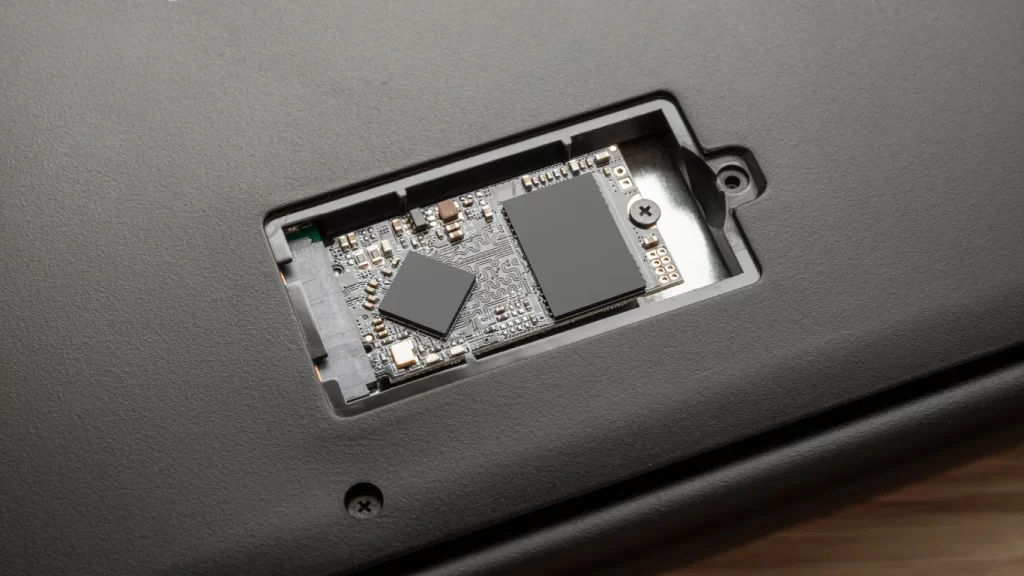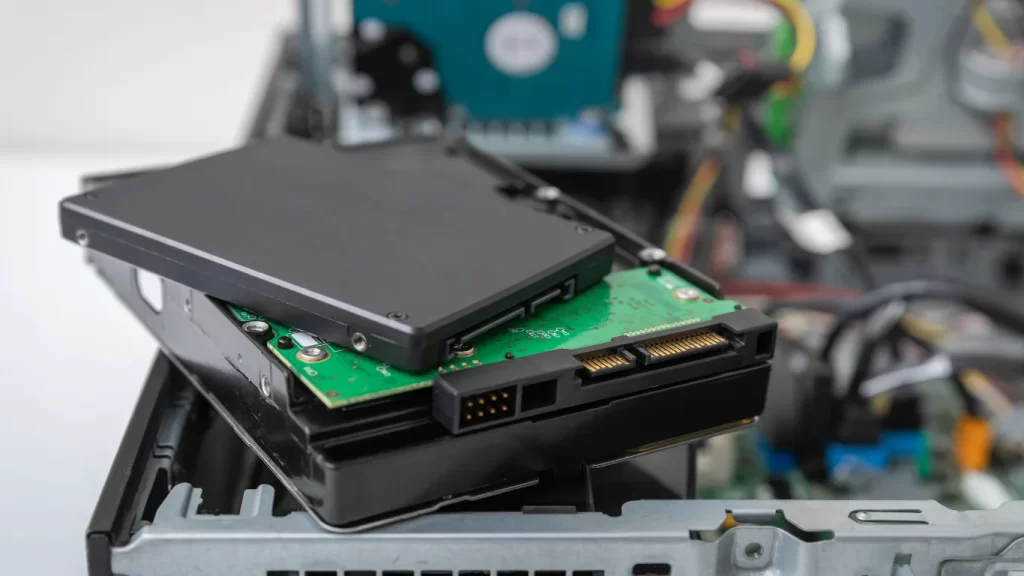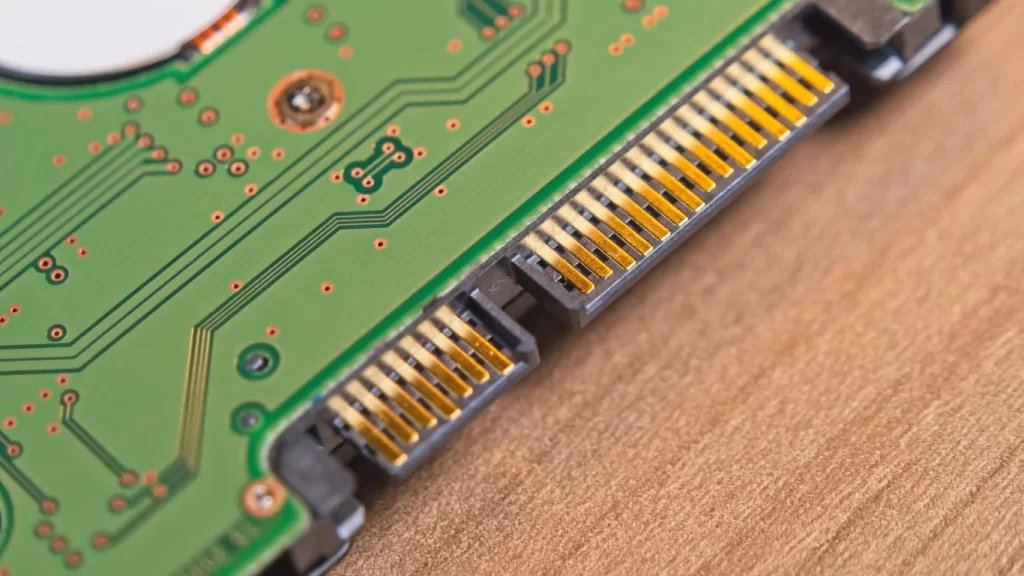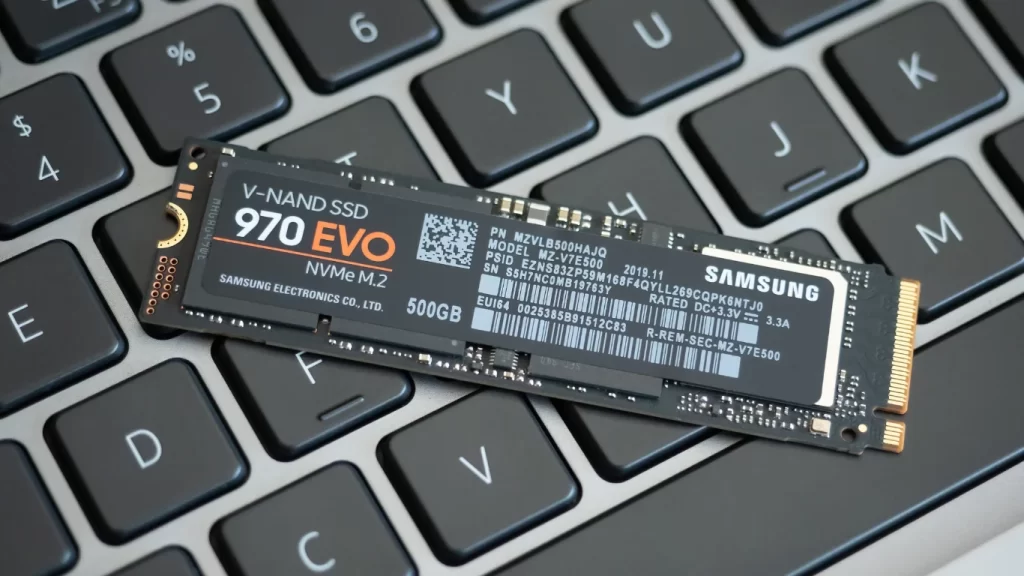SSDs, or Solid-State Drives, have totally changed the game for storing data. They’re way faster, more efficient, and tougher than old-school hard drives. It used to be only the tech geeks and pros who needed serious computing power that could afford SSDs, but now they’re a must-have for everyone, whether it’s for personal use or professional work.
The transformation of SSDs from a specialty item to a must-have is a really interesting story of creativity and real-life use. Together we’ll go through early breakthroughs that laid the groundwork for consumer SSD products, explaining the technical advances that have driven SSD technology forward. We’ll also explore how these drives have become crucial for everyday use, highlighting their economic and environmental benefits, which have added to their growing popularity. Looking forward, we’ll examine the projected trends and improvements for SSDs in 2024 and beyond.
From Early Innovations to Consumer Products

Early Prototypes and Industrial Usage
Solid-state drives (SSDs) trace their origins back to the 1950s, marked by innovations such as magnetic core memory and card capacitor read-only store (CCROS). These technologies were initially developed as auxiliary memory units for vacuum-tube computers. However, with the advent of more cost-effective drum storage solutions, the use of these early SSDs declined.
The resurgence of Solid-State Drives technology occurred in the 1970s and 1980s when they were employed in semiconductor memory for high-performance computing applications in early IBM, Amdahl, and Cray supercomputers. Despite their potential, these SSDs were seldom used due to their exorbitant costs. It wasn’t until 1976 that Dataram introduced the Bulk Core, offering up to 2 MB of solid-state storage compatible with computers from Digital Equipment Corporation (DEC) and Data General (DG). This period also saw other companies like Texas Memory Systems in 1978 and StorageTek in 1979 developing solid-state storage solutions, primarily for niche applications such as seismic data acquisition in oil companies.
The technological landscape for Solid-State Drives during this era was characterized by significant, albeit gradual, advancements. For instance, the introduction of the Sharp PC-5000 in 1983 with 128 KB of solid-state storage using bubble memory, and subsequent developments by companies like Tallgrass Technologies and Santa Clara Systems, underscored the slow but steady progress towards reliable solid-state storage solutions.
First Consumer SSDs and Market Growth
The transition of SSDs from high-cost industrial applications to more accessible consumer products began earnestly in the late 1980s and early 1990s. The development of Flash EEPROM by Fujio Masuoka of Toshiba in 1980 was a pivotal moment, introducing a technology that allowed for rapid erasure and rewriting of data. This innovation laid the groundwork for the NAND Flash cell, which offered smaller chip sizes and better endurance, making it ideal for mass storage applications.
The commercial viability of Solid-State Drives was further demonstrated in 1988 when Eli Harari’s company, SunDisk (now SanDisk), developed thin-oxide processing technology, leading to the creation of more durable and efficient flash-based SSDs. By 1991, the price for a 20MB SSD had reached $1,000, indicating a significant drop from earlier costs, though still expensive by today’s standards.
The real breakthrough for consumer SSDs came in the mid-1990s with the introduction of flash-based drives that did not require batteries to maintain data integrity, unlike their DRAM-based counterparts. These new SSDs began to replace hard disk drives (HDDs) in critical applications, including military and aerospace sectors. The adoption of SSDs in consumer products gained momentum as companies like Samsung introduced high volume products, such as the Windows XP notebook in 2006, equipped with SSDs, marking a significant milestone in SSD adoption.
Technical Breakthroughs

Advances in Flash Memory Technology
Solid-state drives have seen significant advancements in flash memory technology, particularly with the evolution of NAND flash memory types. These include Single Level Cells (SLC), Multi-Level Cells (MLC), Triple-Level Cells (TLC), Quad-Level Cells (QLC), and Penta-level Cells (PCL). Each type represents a step in the progression of data storage efficiency, with varying impacts on performance, endurance, and reliability. SLC, for instance, offers the highest performance and reliability but comes at a higher cost, making it suitable for industrial applications. Conversely, QLC and PCL technologies, which store more bits per cell, are optimized for read-intensive tasks like data analytics, with PLC being particularly cost-effective for archival purposes.
The challenge in NAND technology lies in the balance between reducing cell size and maintaining sufficient electron storage to ensure reliable performance. As cells shrink, maintaining performance and reliability becomes more challenging due to increased cell-to-cell interference. To address these limitations, 3D NAND technology emerged, stacking cells vertically rather than horizontally. This innovation not only increases storage density but also enhances performance and endurance while reducing power consumption, making it a cornerstone of modern Solid-State Drives technology.
Improvements in Speed and, Efficiency
The transition to faster interfaces marks a significant evolution in SSD technology. Initially, SATA SSDs represented a major leap from HDDs by saturating the SATA bus at speeds up to 550 MB/s. However, the introduction of NVMe technology utilizing the PCIe bus has unlocked even greater potential. PCIe 4.0, for example, dramatically increases bandwidth, allowing for data transfer speeds that can theoretically reach up to 64,000MB/s, far surpassing older technologies.
This increase in speed translates to substantial improvements in system performance, including faster boot times, quicker data access, and more efficient operation of applications that handle large volumes of data. These benefits are particularly important in business environments where time and efficiency are critical.
Moreover, the development of ultra-high capacity Solid-State Drives, such as Samsung’s 256 TB quad-level cell SSD, is set to revolutionize data storage in fields like artificial intelligence. Although these high-capacity drives are still on the horizon, they represent the potential for future SSDs to handle increasingly large and complex datasets more efficiently.
SSDs continue to evolve, improving the speed and storage capacity. Innovations like 3D NAND and the transition to faster PCIe versions are just the beginning. As SSD technology advances, it promises to deliver even greater performance and efficiency gains, shaping the future of digital storage and computing.
Solid-State Drives in Everyday Use

Solid-state drives (SSDs) have significantly altered the landscape of personal and professional computing with their robust performance and reliability. Unlike traditional hard disk drives (HDDs) that rely on mechanical parts, SSDs operate through integrated circuits, which means they do not have moving parts that wear out over time. This fundamental difference not only enhances the durability of SSDs but also provides substantial improvements in speed and energy efficiency.
Impact on Computers and Mobile Devices
The use of SSDs in computers and mobile devices has been a big change. SSDs are much faster than HDDs, up to a hundred times faster in handling data. This means faster start-up times, quicker access to files, and better performance for applications, especially those needing quick data retrieval like operating systems. SSDs don’t have moving parts, so they are quieter, less likely to break, and use less power. This is especially good for mobile devices like laptops and tablets where battery life is important.
Moreover, SSDs are smaller and lighter than HDDs, making them ideal for compact electronic devices. Their robust nature means they are less likely to be damaged when dropped, an advantage that is highly valued in portable devices which are frequently moved and transported.
SSDs in Gaming and Media Storage
In the gaming world, Solid-State Drives have revolutionized the way games are played and experienced. Games installed on SSDs launch and load levels much faster compared to those on HDDs. This is because SSDs can handle large volumes of data that games typically require without the slowdowns caused by the mechanical limitations of HDDs. The smoother experience in games that stream assets from the storage is largely attributed to the superior read/write speeds of SSDs.
The media and entertainment (M&E) industry, particularly in high-speed media editing, streaming video platforms, and collaborative file sharing, greatly benefits from SSDs. The ability of SSDs to integrate seamlessly into existing architectures while providing high performance and easy scalability is crucial for handling increasingly large file sizes typical in modern media production. For instance, the Phison X1 SSD series, with its capability to transfer large video files rapidly (100 GB in less than 15 seconds), exemplifies the critical role SSDs play in post-production and content streaming.
As new I/O technologies continue to evolve, they capitalize on the potential of SSDs, allowing for more complex and immersive gaming and media environments. This includes more detailed game worlds and smoother streaming of high-resolution video content, setting a new standard in how digital content is consumed and interacted with.
Solid-State Drives are making digital devices and applications faster and more efficient for both consumers and professionals in various fields. They have become essential in modern technology and are driving future innovations in digital storage and computing.
Economic and Environmental Benefits
Solid-State Drives (SSDs) offer significant economic and environmental advantages over regular Hard Disk Drives (HDDs), making them an increasingly popular choice for data storage solutions. These benefits not only contribute to cost savings but also support sustainable practices in various industries.
Cost Trends Over Time
The cost of SSDs has seen a dramatic decrease over the years, largely due to advancements in technology and increased production scales. Historically, SSDs were considered a high-cost option compared to HDDs. However, recent trends indicate a rapid decline in prices. For example, the cost per gigabyte of enterprise server Solid-State Drives was expected to drop from $1.90 in 2012 to just $0.28 in 2017. This reduction is attributed to innovations such as the development of 3D V-NAND technology, which not only enhances the storage density and reliability of SSDs but also reduces power consumption and increases longevity. These technological advancements have exerted downward pressure on prices, making SSDs an economically viable option for both personal and enterprise use.
Energy Efficiency and Environmental Impact
Solid-State Drives uses significantly less power than HDDs, which translates into lower energy costs. On average, SSDs use about 2-3 watts during active use, compared to 6-7 watts or more for HDDs. This reduced power consumption is crucial in environments like data centers, where energy efficiency is a priority. Data centers equipped with SSDs require less power to perform the same tasks as those with HDDs, leading to substantial energy savings and supporting sustainability goals.
Moreover, SSDs generate less heat due to their solid-state nature, eliminating the need for extensive cooling systems that are necessary with HDDs. This not only reduces the energy used for cooling but also decreases the carbon footprint of data storage operations. The environmental benefits of SSDs extend beyond just energy consumption. They also have a lower resource depletion potential due to their minimal use of harmful materials such as lead and mercury. .
Future of Solid-State Drives

Emerging Innovations
The trajectory of solid-state drives (SSDs) is marked by continuous technological advancements that promise to change the landscape of data storage. One of the most significant breakthroughs is the evolution of 3D NAND technology, which enhances memory densities while boosting reliability and endurance. This technology allows for the stacking of memory cells vertically, increasing storage capacity without compromising the footprint of the SSD.
Another pivotal innovation is the adoption of Quad-Level Cell (QLC), which stores four bits per memory cell. This advancement not only increases storage capacity but also maintains affordability, making high-capacity SSDs more accessible to a wider range of users. Additionally, the integration of Non-Volatile Memory Express (NVMe) and PCIe Gen4 interfaces has revolutionized data transfer speeds and reliability, making SSDs incredibly efficient for handling large-scale enterprise workloads.
Artificial intelligence is also playing a major part in the advancement of SSDs. AI-driven storage solutions utilize machine learning algorithms to analyze usage patterns and optimize performance in real-time. This predictive capability significantly reduces latency and enhances the efficiency of data processing, tailoring performance to the specific needs of applications.
Predictions for Market Growth
The future of the Solid-State Drives market looks exceptionally bright, with predictions pointing towards substantial growth and innovation. The global SSD market, valued at USD 12,731.12 million in 2022, is expected to expand at a compound annual growth rate (CAGR) of 16.06%, reaching approximately USD 31,107.82 million by 2028. The demand for strong and efficient data storage solutions is increasing across various sectors, including consumer electronics, enterprise applications, and data centers. This growth is being driven by this demand.
The continuous advancements in storage technologies, such as 3D NAND flash memory and NVMe interfaces, are creating opportunities for SSD manufacturers to innovate and introduce cutting-edge features. These developments are expected to lead to higher-capacity drives with faster data transfer rates and improved energy efficiency. Furthermore, the rise in cloud computing services and the greater demand for high-speed data access in data-heavy applications are boosting the need for advanced SSDs.
The market is also witnessing a shift to a more sustainable and energy-efficient storage solutions, aligning with global sustainability goals. This focus on eco-friendly technologies is likely to drive further innovations in Solid-State Drives design, making them an integral part of the green technology landscape.
Summing Up: Solid-State Drives
The journey of solid-state drives (SSDs) from their inception to becoming a cornerstone of modern computing highlights a remarkable evolution in data storage technology. Throughout this article, we’ve outlined the key advancements and innovations that have propelled SSDs to the forefront, emphasizing their growing importance in both consumer and professional markets. By tracing the development of SSDs, from early prototypes to the latest in flash memory technology, we’ve shed light on the factors driving their widespread adoption and the significant impact they have on efficiency, performance, and reliability in digital storage solutions.





